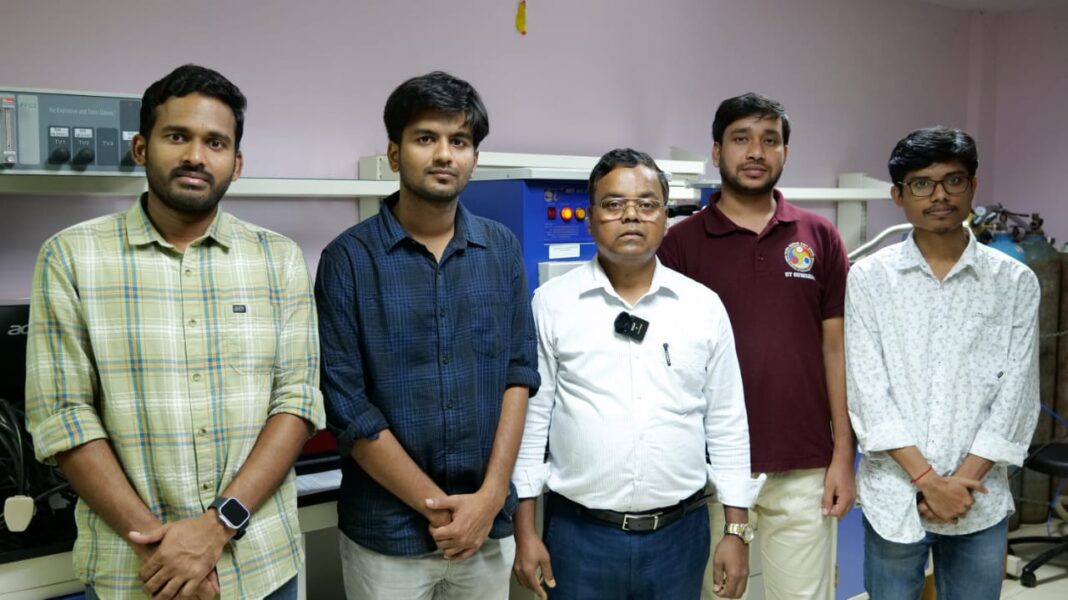Guwahati, May 1: Imagine a single material that can clean dirty industrial water, mop up oil spills, and even power the next generation of smart wearables. That’s exactly what researchers at the Indian Institute of Technology (IIT) Guwahati have achieved with their newly developed multi-functional aerogel—a cutting-edge material poised to tackle some of the planet’s most pressing environmental challenges.
Led by Prof. P. K. Giri from the Department of Physics and Centre for Nanotechnology, the research team has engineered a lightweight, porous wonder-material that works like a Swiss Army knife for environmental cleanup. Their findings, recently published in the international journal Carbon, showcase how science at the nanoscale can have mega-sized impact.
At the heart of the innovation is a powerful hybrid: MXene—a two-dimensional material known for its high conductivity—fused with carbon foam. With an added boost from phosphorus doping, the aerogel becomes a hyper-efficient catalyst for breaking down stubborn organic pollutants in water, like antibiotics and toxic dyes, using advanced oxidation processes (AOPs).
“Pollution from rapid industrialization and agriculture is choking our water sources. Our hybrid aerogel not only purifies wastewater but also selectively removes oil from water, making it ideal for oil spill cleanups,” explained Prof. Giri. “It’s a versatile material that merges sustainability with real-world utility.”
The magic lies in its design: feather-light, sponge-like, and riddled with tiny pores that soak up oil while repelling water. This makes it not only environmentally friendly but also highly effective for industrial applications.
But the innovation doesn’t stop there. The same material can act as a flexible strain sensor—its electrical resistance changes under pressure—opening doors for use in wearable tech, smart electronics, and infrastructure health monitoring.
The study’s co-authors—Koushik Ghosh, Sanjoy Sur Roy, Sirsendu Ghosal, and Debabrata Sahu—are now working on taking the material to the next level. One key challenge they aim to overcome is the use of harmful hydrofluoric acid in MXene synthesis. Their ongoing efforts focus on developing acid-free, scalable manufacturing methods and adding a co-catalyst layer to boost durability.
Also Read: Sikkim: Tourists missing since April 21 on Goechala trek, yet to be traced
Also Watch
Find latest news from every corner of Northeast India at hubnetwork.in, your online source for breaking news, video coverage.
Also, Follow us on-
Twitter-twitter.com/nemediahub
Youtube channel- www.youtube.com/@NortheastMediaHub2020
Instagram- www.instagram.com/ne_media_hub
Download our app from playstore – Northeast Media Hub





